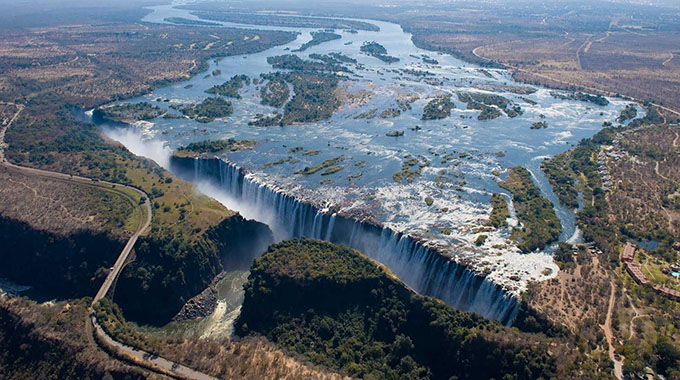
Most of the water flowing in Lake Kariba, and for that matter over the Victoria Falls, does not come from Zimbabwe; a fair amount comes from north-western Zambia, but easily the most important source of water for both the Lake and the Falls is south-eastern Angola, so the rainfall there is what is critical.
The news is good, or at least a lot better than last year.
The water coming into the Barotse flood plain in Zambia hit just over 5 000 cubic metres a second at the end of February, receded a bit and then started coming up again to a little over 4 500 cubic metres a second at the end of last week, and that was around six times what we were seeing on the same date last year and about two-and-a-quarter times the general average.
In fact, the flows are the highest for 20 years, according to the Zambezi River Authority (ZRA), the independent body that manages Kariba Dam and allocates water rations to Zesa and Zescom of Zambia.
It can take a bit of time for this seasonal flow of water to reach Victoria Falls and Lake Kariba, but now that the Barotse flood plains are full, it is flowing faster.
By the end of last week more than 10 times as much water was thus dropping over the Victoria Falls than on New Year’s Day, and almost four times as much as the same day last year, making a spectacular show and ensuring that when tourism resumes after the global coronavirus alert, our visitors are guaranteed their money’s worth.
That is important, considering the nonsense that was being written.
It must be remembered that even when flows are at their lowest, the Falls are still spectacular.
The Zambezi never dries up, and the Falls are never just left as basalt cliffs drying in the sun.
There is always quite a lot flowing over the Falls. At the very worst the Zambezi still dumps in the first gorge every hour twice as much water as Harare City Council manages to extract from all its supply dams and distribute to the city and its surrounding towns on a really good day down at the waterworks.
Today, the gorge is getting a good day’s supply of Harare water in just under two minutes.
So tourism is always safe, and right now it would be in good shape and when Covid-19 is beaten, or at least is so under control, there will be the usual spectacular attraction in Zimbabwe.
The Kariba news is both good and not so good. The lake is rising fairly fast as far more water flows in than the two power stations are using, with almost four times as much coming in as is going out.
So the lake rose almost a metre between New Year’s Day and the end of last week, and has risen a bit more since.
But it had been run down to close on one metre above the minimum operating level before the new season’s floods started flowing in and is only a little over two metres above that minimum level.
Even when the lake is at the minimum operating level for the power stations it holds a lot of water.
Kariba Dam has two functions. First it has to provide a drop for the water to convert potential energy to kinetic energy as it falls down from the inlets to the turbines.
And if the flows in the Zambezi were identical every day of the year, every year, then the size of the impounded lake would be immaterial.
But the Zambezi has a very large variation between high flow and low flow, and between good years and bad years.
So a really large lake is needed, and Lake Kariba is the largest storage dam in the world, although the combined power stations are not.
But only the top 13m of a full lake can be used for generation, and that is a lot of water, around 65 billion cubic metres, enough to supply greater Harare for 400 years at present rates.
Unfortunately, at the end of last week, despite the rise, there were only 9,63 billion cubic metres in the usable band, a little under 15 percent of the full lake although that had crept up to almost 16 percent by Monday, according to ZRA.
This time last year it was at 37 percent, although lake levels were already falling as we started eating into storage accumulated in good years, and kept falling all year.
So although ZRA, Zesa and Zescom are all breathing a little easier, the authority has maintained its allotted annual ration for 2020 at 22 billion cubic metres. So Zesa and Zescom can each, on average, generate 275 megawatts for a total of 550MW.
How they use their rations is their business.
The ration is tight because the authority wants to restore stored reserves, or at least bring levels up to something that ensures the Kariba stations could cope with a regional drought again.
So the two stations between them should be using just under 700 cubic metres a second. According to authority daily figures for March they were overdoing it, usually averaging a little over 900 cubic metres a second.
So regrettably at some stage they are going to have to cut back. We can hope that the management and financial reforms at Zesa will, when the cut backs are compulsory, have managed to get more units at Hwange Thermal up and running to take up the slack.
Implementing those reforms at Zesa rapidly now becomes even more urgent as imports will be tight since Eskom of South Africa is also in need of reform, has also been given a new professional management team to fix its mess, but has to cut back on generation as it catches up on a decade of bad maintenance.
